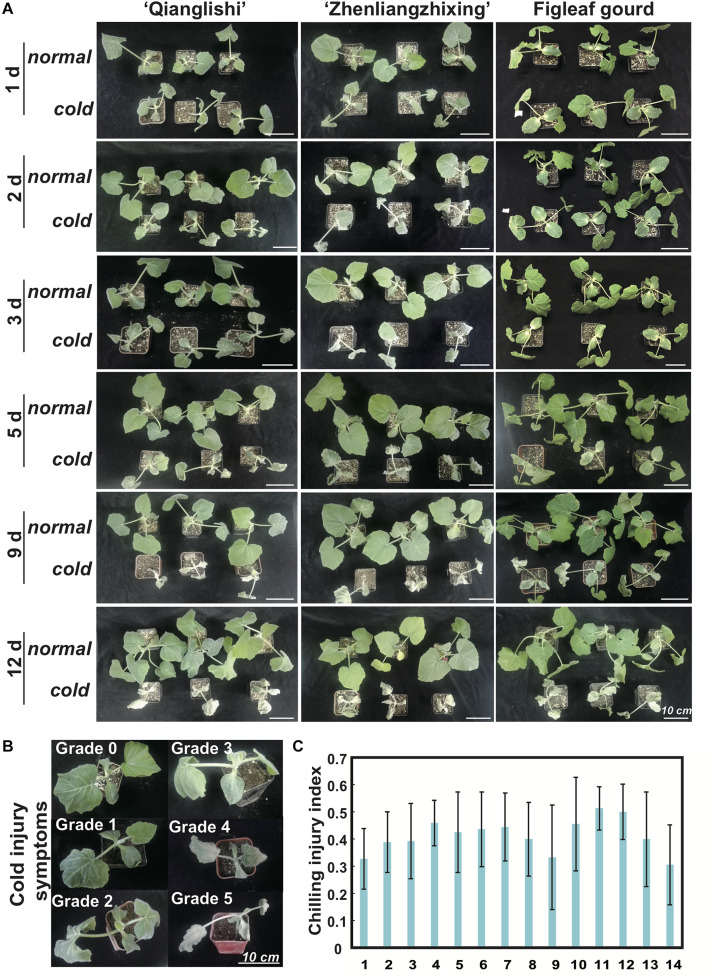FIGURE 1.
Seriousness of cold-injury symptoms vary between pumpkin rootstock varieties. (A) Phenotypic changes in three selected pumpkin rootstocks, “Qianglishi,” “Zhenliangzhixing,” and figleaf gourd, after different periods of chilling (4°C). Chilling treatments were applied to 100 seedlings in each of three biological replicates at the two-true-leaf stage. Another 100 seedlings in each of three biological replicates were kept in normal growth conditions. Symptoms were observed every day to evaluate the chilling injury of different varieties. (B) Chilling injury symptoms of pumpkin rootstock seedlings “Qianglishi” were evaluated using the chilling injury index (CII) classification (Semeniuk et al., 1986) after 3 d of chilling. Grade 0: no symptoms of injury. Grade 1: the edges of first leaves are yellow or slightly dehydrated. Grade 2: dehydration spots appear in a small part of the first leaves; the other leaves are slightly dehydrated. Grade 3: dehydration spots appear in half of the first leaves; the other leaves are slightly dehydrated. Grade 4: dehydration spots appear in most of the leaf area; half of the other leaves are dehydrated. Grade 5: almost all leaves are seriously dehydrated and wilted. (C) CII statistics in 14 pumpkin rootstock varieties. The detailed information of different numbers representing different pumpkin commercial varieties was listed in Material and Method part. Error bars indicate SD.

